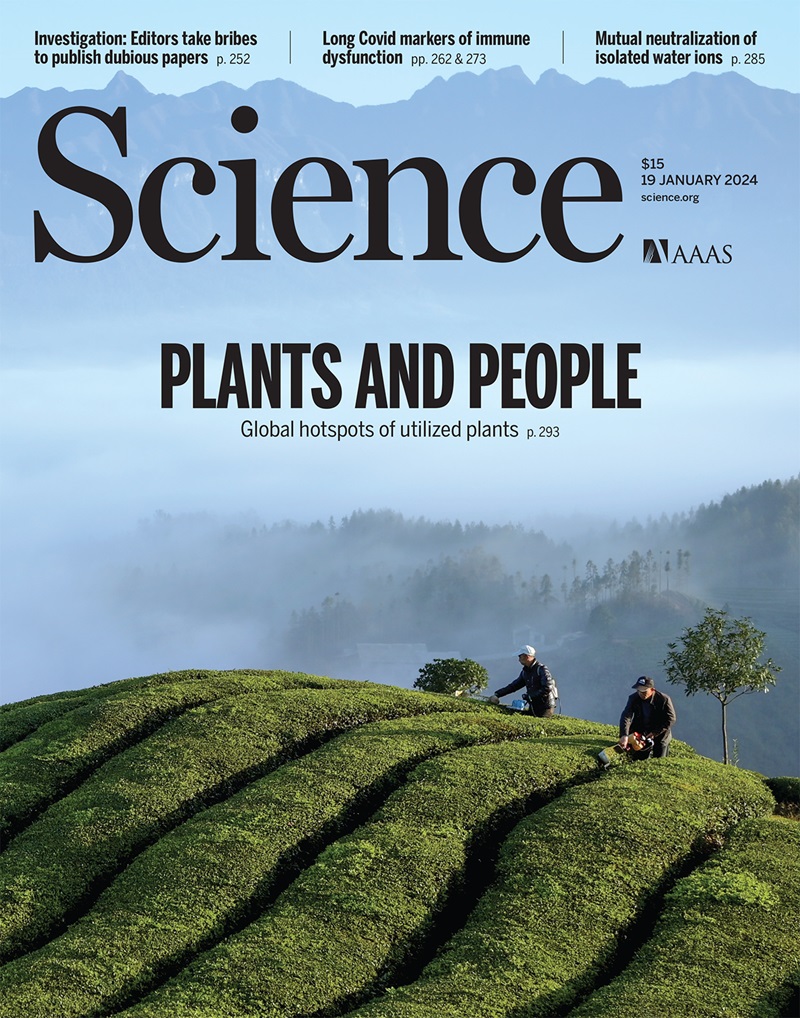垂直表面白天的亚环境辐射冷却
IF 45.8
1区 综合性期刊
Q1 MULTIDISCIPLINARY SCIENCES
引用次数: 0
摘要
即使在阳光直射的情况下,亚环境白天辐射冷却技术也能通过向外层空间发射热辐射,使温度被动地达到环境温度以下。这项技术有望得到广泛应用。然而,以往的亚环境白天辐射冷却演示需要直接面向天空的表面,而这些表面无法应用于建筑物和车辆等现实世界中无处不在的垂直表面。在这里,我们利用一种分层设计、角度不对称、光谱选择性热辐射器,演示了垂直表面在日照峰值下的亚环境日间辐射冷却。在每平方米约 920 瓦的峰值太阳光下,我们的辐射器能达到比环境温度低约 2.5°C 的温度,与硅聚合物混合辐射冷却器和商用白漆相比,温度分别降低了约 4.3° 和 8.9°C。本文章由计算机程序翻译,如有差异,请以英文原文为准。
Subambient daytime radiative cooling of vertical surfaces
Subambient daytime radiative cooling enables temperatures to passively reach below ambient temperature, even under direct sunlight, by emitting thermal radiation toward outer space. This technology holds promise for numerous exciting applications. However, previous demonstrations of subambient daytime radiative cooling require surfaces that directly face the sky, and these cannot be applied to vertical surfaces that are ubiquitous in real-world scenarios such as buildings and vehicles. Here, we demonstrate subambient daytime radiative cooling of vertical surfaces under peak sunlight using a hierarchically designed, angularly asymmetric, spectrally selective thermal emitter. Under peak sunlight of about 920 watts per square meter, our emitter reaches a temperature that is about 2.5°C below ambient temperature, corresponding to a temperature reduction of about 4.3° and 8.9°C compared with a silica-polymer hybrid radiative cooler and commercial white paint, respectively.
求助全文
通过发布文献求助,成功后即可免费获取论文全文。
去求助
来源期刊

Science
综合性期刊-综合性期刊
CiteScore
61.10
自引率
0.90%
发文量
0
审稿时长
2.1 months
期刊介绍:
Science is a leading outlet for scientific news, commentary, and cutting-edge research. Through its print and online incarnations, Science reaches an estimated worldwide readership of more than one million. Science’s authorship is global too, and its articles consistently rank among the world's most cited research.
Science serves as a forum for discussion of important issues related to the advancement of science by publishing material on which a consensus has been reached as well as including the presentation of minority or conflicting points of view. Accordingly, all articles published in Science—including editorials, news and comment, and book reviews—are signed and reflect the individual views of the authors and not official points of view adopted by AAAS or the institutions with which the authors are affiliated.
Science seeks to publish those papers that are most influential in their fields or across fields and that will significantly advance scientific understanding. Selected papers should present novel and broadly important data, syntheses, or concepts. They should merit recognition by the wider scientific community and general public provided by publication in Science, beyond that provided by specialty journals. Science welcomes submissions from all fields of science and from any source. The editors are committed to the prompt evaluation and publication of submitted papers while upholding high standards that support reproducibility of published research. Science is published weekly; selected papers are published online ahead of print.
 求助内容:
求助内容: 应助结果提醒方式:
应助结果提醒方式:


